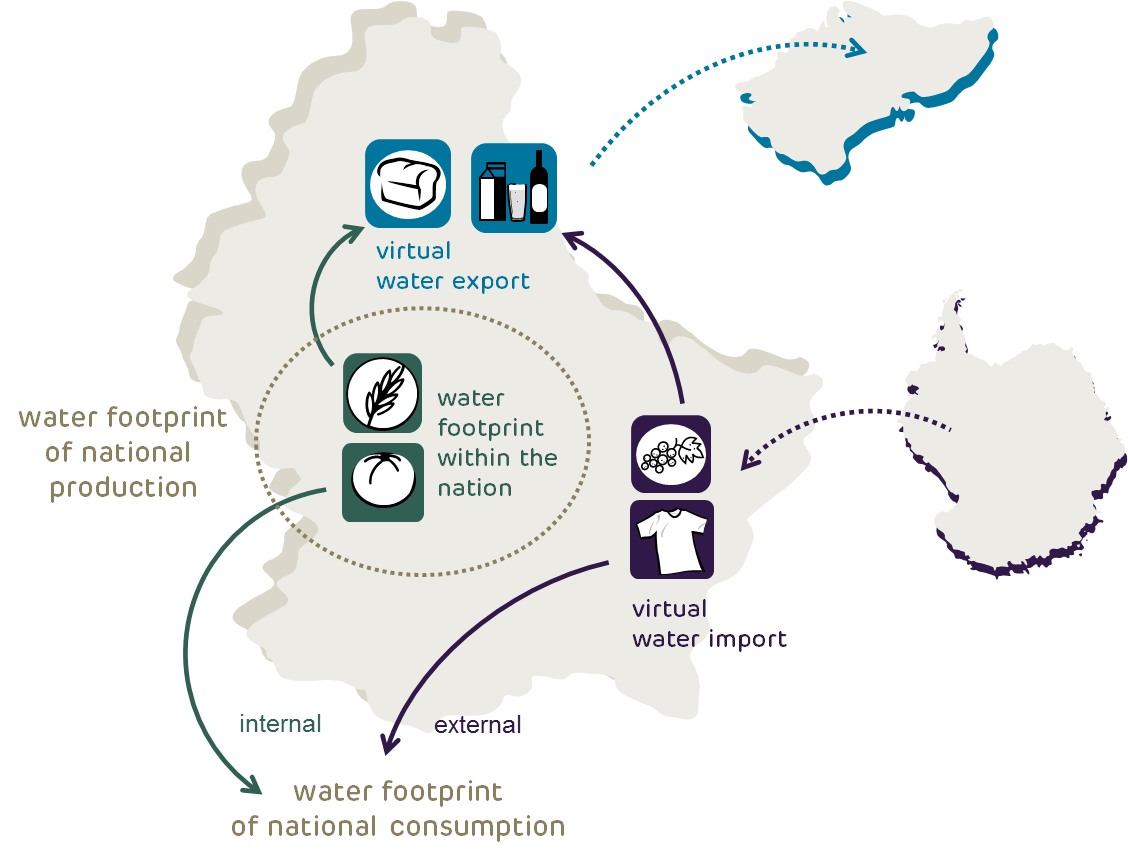National Water Footprint
Water, like energy, is a key input into any economy. With variations in water availability and quality from country to country, water is a local issue. At the same time, because we use international trade in goods to meet the needs of the world’s populations, water is a global, collective resource.
The United Nations warns that water use is growing at twice the rate of population growth. Unless this trend is reversed, two-thirds of the global population will face water “stress” by 2025. In light of this, sharing water fairly and sustainably amongst so many of us is one of the greatest challenges we face in the 21st century.
Water is an astonishingly complex and subtle force in an economy. It is the single constraint on the expansion of every city, and bankers and corporate executives have cited it as the only natural limit to economic growth.Margaret Catley-Carlson, Vice-Chair, World Economic Forum
A nation’s water footprint can be viewed from two perspectives: production and consumption.
The water footprint of production is the amount of local water resources that are used to produce goods and services within the country. This includes the water footprint of agriculture, industry and domestic water use and tells us the total volume of water and assimilation capacity consumed within the borders of the country. This can also be measured for any administrative unit such as a city, province, river basin or even the whole world.
We can also view the water footprint from the perspective of consumption. In this case, the water footprint is calculated for all the goods and services that are consumed by the people living in a country. This water footprint may be partly inside the country and partly outside of it, depending on whether the products are locally produced or imported. The water footprint of consumption can also be measured for any administrative unit.

Together, the water footprint of production and consumption tell an important story about a nation’s water use and dependence on external water resources, which can be used to help governments manage their water resources as well as understand the links between their economic development, food security and international trade relations and water.
The water footprint of production measures the amount of pressure that is being put on local water resources and forms the basis for determining whether they are being used in a sustainable way. The water footprint of consumption reflects the standard of living and lifestyle choices of the country’s residents. Understanding how much of that water footprint is within its borders and the amount and location of the water footprint that is elsewhere is a first step toward assessing the country’s external water dependence and its influence on food and other forms of security.

Countries with limited water resources such as North Africa, Mexico and the Middle East must depend on imported goods to fulfil all the needs of their populations. This is also true for countries with limited land area like Japan and Singapore. Europe, whilst rich in water resources and land area, has 40% of its water footprint outside its borders.
There are large differences in the water footprint of consumption of nations. In the USA, the average water footprint per year per capita is as much as the water needed to fill an Olympic swimming pool (2 842 cubic metres), that is an average of 7 786 litres of water per person per day. In China, the average water footprint is 1 071 cubic metres per year per capita, or 2 934 litres of water per person per day.
Differences in the internal and external water footprint of consumption are also large. In the Netherlands, 95% of the water footprint of consumption lies somewhere else in the world through imported goods, whereas in India and Paraguay only 3% of the national water footprint of consumption is external.
The water footprints of the products consumed depends on the circumstances in the places of origin. For example, very low agricultural yields and associated large water footprints per unit of harvested crop in some developing countries explains why they can have a relatively large water footprint of national consumption.
What can governments do?
Governments, along with all societal stakeholders, can work towards managing water for sustainable development, for thriving economies and the well-being of their citizens and the environment.
